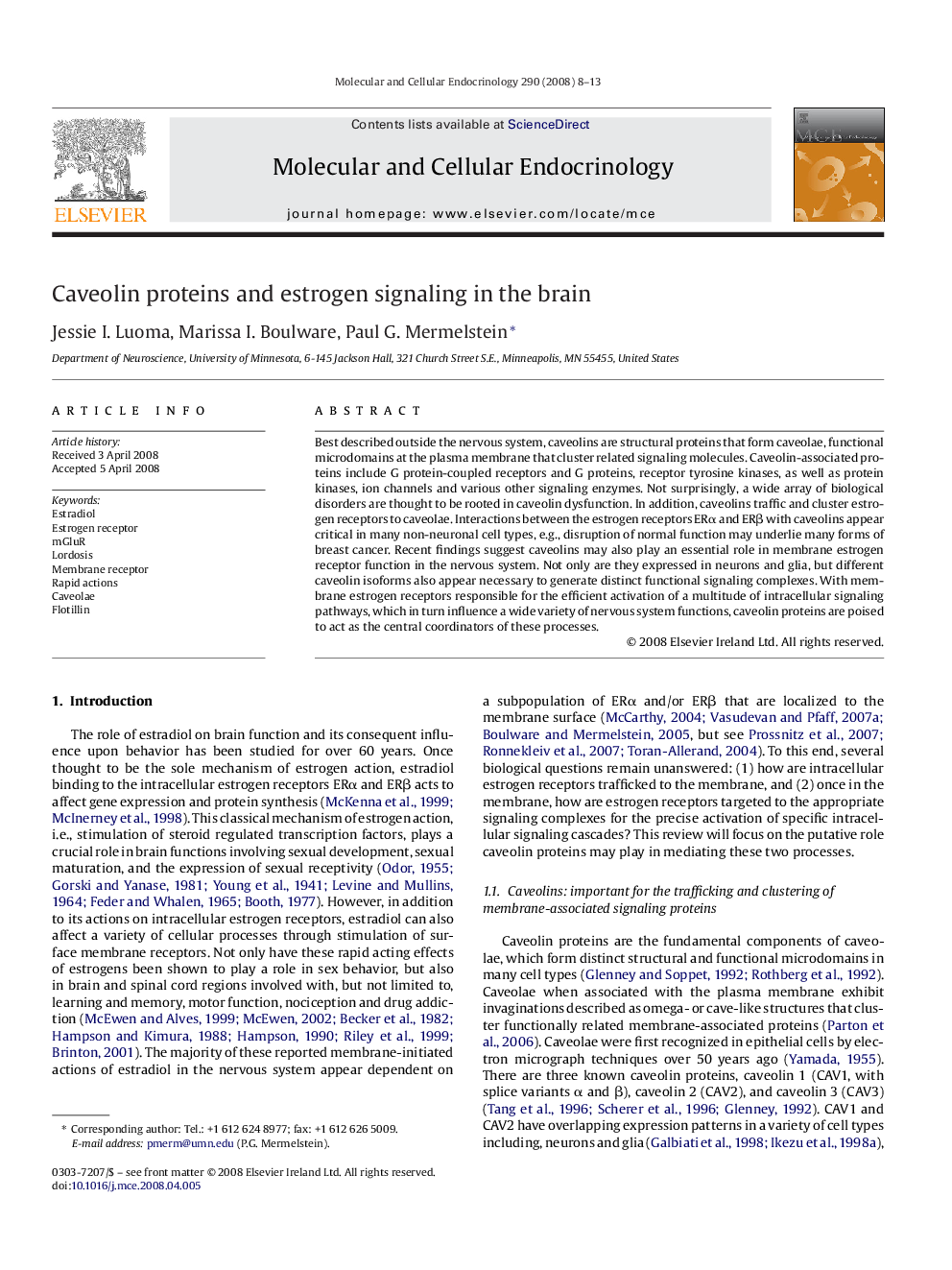| Article ID | Journal | Published Year | Pages | File Type |
|---|---|---|---|---|
| 2197525 | Molecular and Cellular Endocrinology | 2008 | 6 Pages |
Best described outside the nervous system, caveolins are structural proteins that form caveolae, functional microdomains at the plasma membrane that cluster related signaling molecules. Caveolin-associated proteins include G protein-coupled receptors and G proteins, receptor tyrosine kinases, as well as protein kinases, ion channels and various other signaling enzymes. Not surprisingly, a wide array of biological disorders are thought to be rooted in caveolin dysfunction. In addition, caveolins traffic and cluster estrogen receptors to caveolae. Interactions between the estrogen receptors ERα and ERβ with caveolins appear critical in many non-neuronal cell types, e.g., disruption of normal function may underlie many forms of breast cancer. Recent findings suggest caveolins may also play an essential role in membrane estrogen receptor function in the nervous system. Not only are they expressed in neurons and glia, but different caveolin isoforms also appear necessary to generate distinct functional signaling complexes. With membrane estrogen receptors responsible for the efficient activation of a multitude of intracellular signaling pathways, which in turn influence a wide variety of nervous system functions, caveolin proteins are poised to act as the central coordinators of these processes.
